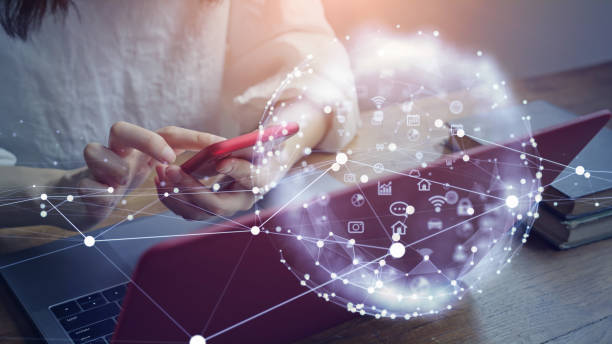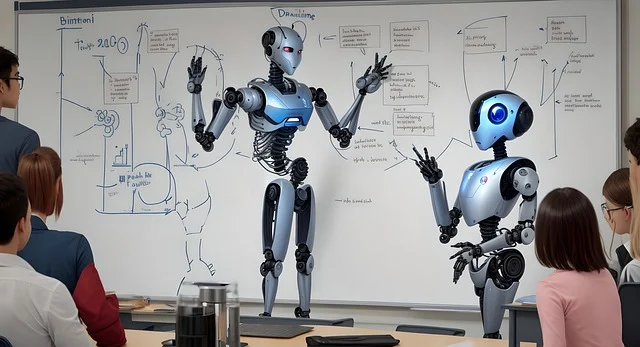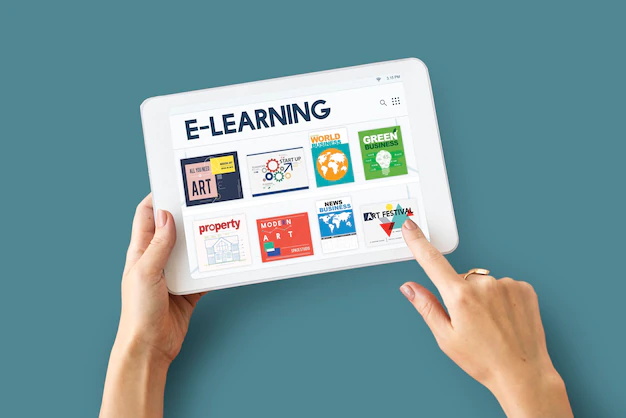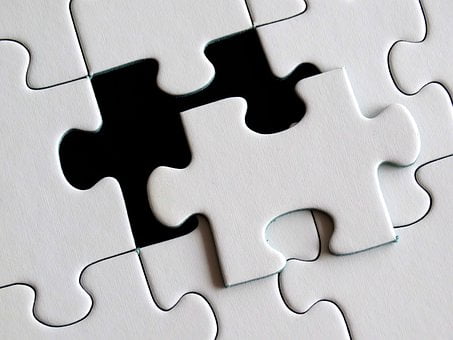Futuristic Elements Of Blockchain Technology In Education

Education has changed a lot. First, we had regular classrooms. Then, we had online learning. Blockchain technology in education!
Now, we have a mix of both called blended learning. The COVID-19 pandemic made digital learning more popular, and schools all around the world started teaching students using online platforms and Learning Management Systems (LMSs).
Blockchain technology could greatly change the education industry. Blockchain has the power to change how academic information is handled and how teachers and students communicate.
Let’s see how the use of blockchain technology could impact education in the future.
Read: Blockchain Technology And eLearning: Its Improvement Of E-learning
Effects Of Blockchain Technology In Education
1. Keeping Student’s Records
More people are buying fake degrees because there are more online learning options available nowadays. This is starting to worry a lot of businesses and schools all around the world.
A blockchain can fix the certification management problem by allowing universities to store certificates securely on blocks that cannot be changed.
Students can easily share these credentials by including the specific web addresses in their email signatures, social media profiles, and resumes.
Many companies that develop blockchain also offer certificate and identity management services. Because blockchain is not controlled by a single entity, all the files are saved on the blockchain and cannot be changed.
They can also be confirmed as true because everyone can see them.
2. Digital Badges
One way blockchain can be useful in eLearning is by creating safe digital badges and certificates. These can be checked and shown on a person’s online portfolio.
Smart contracts can be used to motivate and make it easier for people to learn and work together without a middleman. These computer programs can be set up to give students rewards for participating in online discussions or giving feedback on their classmates’ work.
This can help make learning more interesting and lively, and help students become better at thinking and communicating.
3. Reduction in Cost
This idea can also apply to situations where students go to different schools for exchange programs. Instead of lots of paperwork, their grades can be easily shared between the schools, which saves money.
4. Smart Contracts for Student’s Quizzes
Smart contracts on blockchains could also simplify the work of educators. A smart contract is a piece of code written on a blockchain that runs automatically when certain conditions are fulfilled.
Smart contracts can be used to organize and distribute educational content as well. They can use technology to send course materials like readings, videos, and quizzes to students, and keep track of how students are doing on their assignments.
This can help to lessen the amount of work for administrators and make the courses more organized.
5. Getting Rewarded With Cryptocurrency
Moving documents and getting them checked when a student switches schools is a long and time-consuming process for the student, the teacher, and the school staff.
Blockchain technology can make the verification process in schools and universities more efficient.
We get scholarships, trophies, and rewards for doing well in other activities and school work. But, using blockchain technology, we can also give kids real prizes like digital money called cryptocurrencies, such as bitcoins.
Teachers can give rewards to their students in online learning when they finish modules or other assignments using gamification.
Learning Management Systems use gamification to turn rewards into a digital currency.
6. Certifying With Ease
Blockchain’s distributed ledger technology can improve how clear and responsible things are in the educational field.
It can make an unchangeable record of educational information, like grades, diplomas, and certificates, that can be confirmed and cannot be altered.
This means that academic achievements can be checked with complete accuracy, and employers can trust that job applicants have the necessary skills and knowledge.
When a student moves from one school to another, it takes a long time to transfer their papers and confirm their authenticity. We can simplify the text as follows:
Using blockchain technology in schools and colleges can make the verification process faster and more efficient.
When a student moves from one school to another, their academic records can be easily transferred to the new school by giving them permission to access the blockchain.
Some companies create certificates using blockchain technology that cannot be changed or faked, and can be easily checked to confirm they are genuine.
Conclusion
The blending of the real world with Virtual Reality and Augmented Reality is happening faster, and this is causing changes in different parts of the economy all around the world.
They make things work better and have more space to store things. Digital currencies, a decentralized digital ledger, and virtual reality projects are already having an impact on the financial industry.
So, adding these things to a school curriculum will not only give more chances to young people, but will also create a system that works well, saves money, and helps all students in different social groups and reaches out to more people.
In simple terms, a blockchain development company can assist schools in making their work more efficient, saving money, and improving the way students are taught using blockchain technology.







